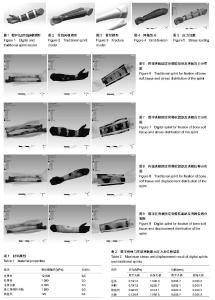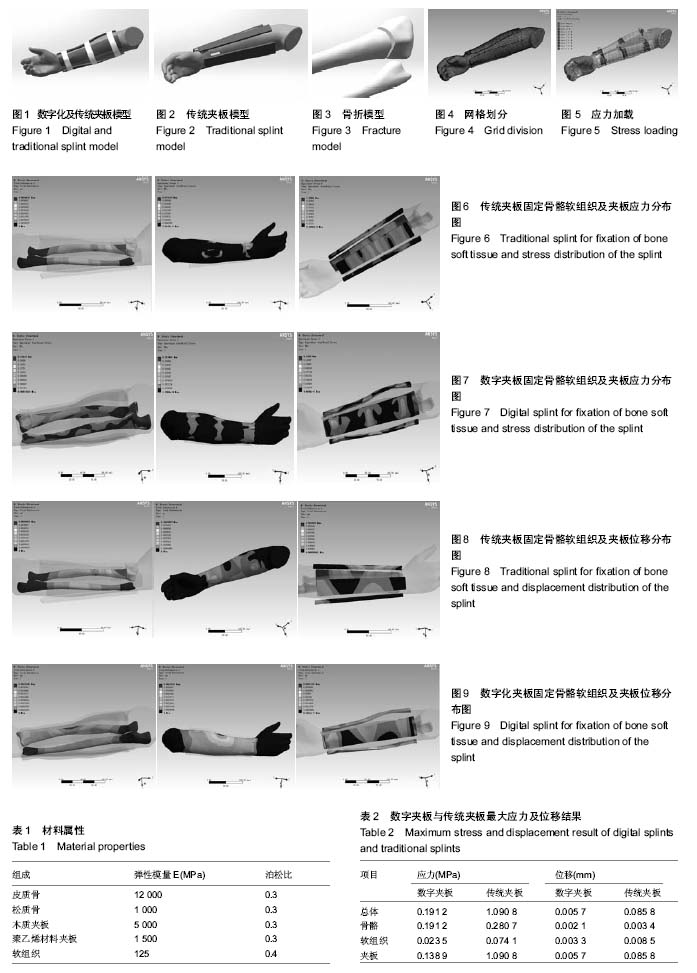| [1] 黄枫.岭南骨伤名家蔡荣对杉树皮夹板治疗骨折的贡献[J].新中医,2015,(10):8-10.[2] 姜自伟,高怡加,罗伟东,等.黄枫教授手法复位夹板固定治疗不稳定型桡骨远端骨折的经验.广州中医药大学学报,2012,29(5): 590-592.[3] 孙卫东,温建民,胡海威等.拇外翻第1跖骨颈部不同截骨角度截骨端稳定性有限元分析[J].中华损伤与修复杂志:电子版, 2012, 7(5):492-496.[4] 董福慧,尚天裕.小夹板固定治疗骨折生物力学研究[J].中国医药学报,1988,3(3):19-23.[5] 张盼.智能气囊小夹板治疗桡骨远端不稳定性骨折的临床研究[D]南京中医药大学,2014.[6] Lavine LS, Grodzinsky AJ. Electrical stimulation of repair of bone.J Bone Joint Surg Am.1987;69(4):128.[7] 陈福林,齐越峰,田宁宁,等.桡骨远端伸直型骨折纸夹板外固定治疗的比较研究[J].中国中医骨伤科杂志,2004,1(4):13.[8] 王猛,何向阳,郭仪林,等.石膏托和夹板外固定治疗桡骨远端伸直型骨折的疗效比较[J].医学综述,2012,9(4):52.[9] 姜保国,龙奎元,张殿英,等.桡骨远端骨折的治疗策略[J].中华创伤骨科杂志,2004,6(10):1118-1121.[10] 洋崇军.浅谈小夹板固定的有关问题[J].中骨,2008,20(4):79-79.[11] 田卫军,李郁.基于逆向技术的骨盆环三维重构与结构分析[J].机电工程,2014,31(8):997-1001.[12] 钟锦然,何坚,陈剑,等.应用逆向工程技术测量人膝关节内外侧间室间隙和体积[J].中国组织工程研究,2015(31):5046-5050.[13] 华臻,尹恒,刘勇,等.桡骨远端解剖型纸质支架夹板的设计及人体贴合研究[J].中国全科医学,2016,19(15):1856-1860.[14] 邓强,李盛华,赵道洲,等.一种桡骨远端骨折电子智能夹板的设计及临床研究[J].中国医疗器械杂志,2012,36(4):270-271.[15] 聂文忠,房光开,闫勇增.个性化三维矫形支具的设计及其生物力学研究[J].机械设计与制造,2015,(10):237-240.[16] 张爱平,许书亮,周恩昌.塑形夹板治疗尺桡骨双骨折的有限元分析[J].福建中医药大学学报,2002,12(4):25-27.[17] 曹江林.基于多传感器测量的CAD逆向建模技术研究[D].广东工业大学,2014.[18] 成思源,周晓东,杨雪荣,等.基于数字化逆向建模的3D打印实验教学[J].实验技术与管理,2015,1(1):25.[19] 王凯.三维有限元分析在骨科中的应用.生物骨科材料与临床研究[J],2013(1):31-34.[20] 陈锡栋,杨婕,赵晓栋,等.有限元法的发展现状及应用[J].中国制造业信息化,2010,39(11):6.[21] MandyT.Pressure sore risk calculator for intensive care patients.Intensive Care Nursing.1995;1:344-353.[22] 徐新如,丁真奇.微动对骨折愈合的研究进展[J].创伤与急诊电子杂志,2015,3(1):4-6.[23] 张恒,李文锐.影响骨折愈合的因素—应力和微动[J].海南医学, 2010, 21(1):112-116.[24] 陆忠芳.基于云计算的移动医疗服务平台的研究与开发[D].浙江理工大学,2013.[25] 黎阳子.基于Android平台的移动医疗系统的研究与设计[D].武汉科技大学,2014.[26] 孟濬,朱天宇.一种基于智能手机的新移动医疗系统模式.计算机应用研究, 2013, 30(7):2055-2060. |

